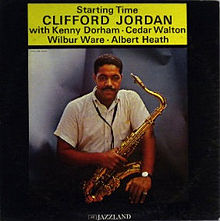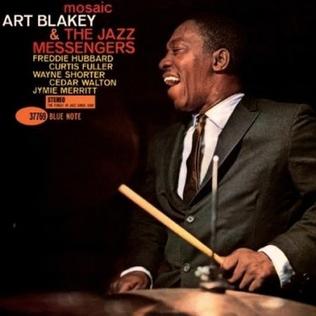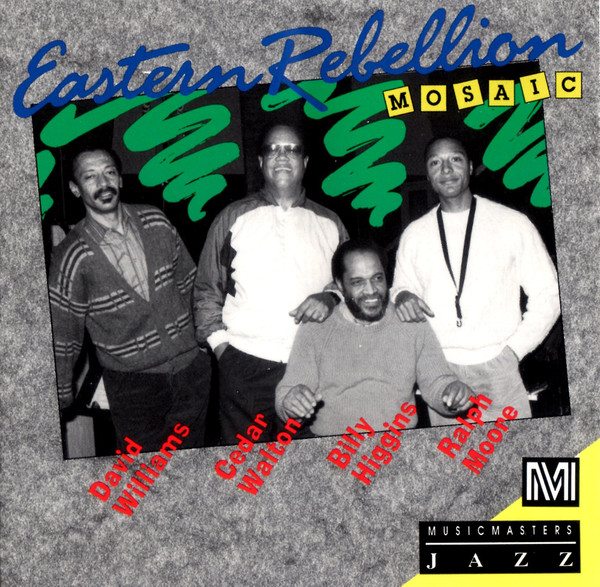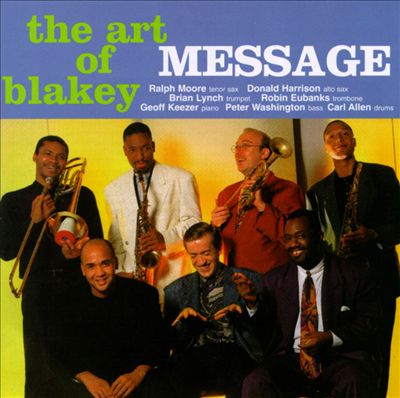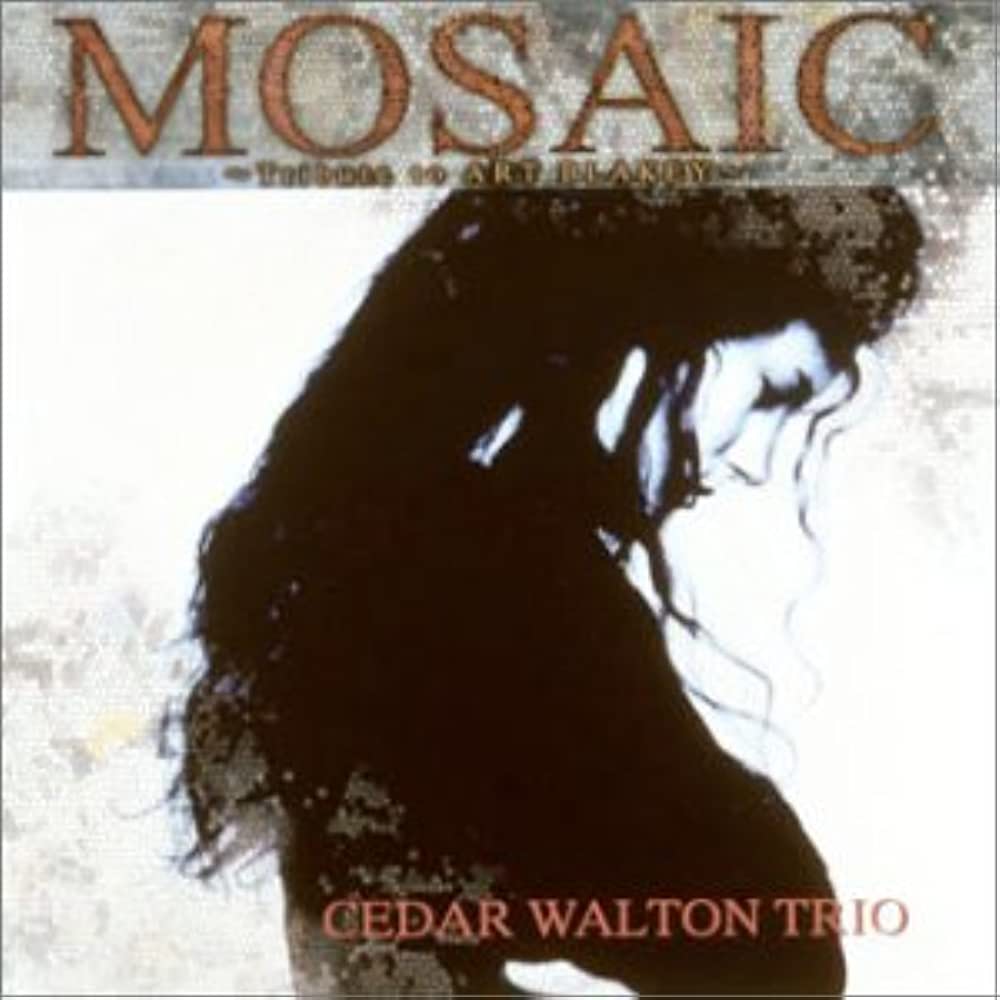Mosaic – Cedar Walton
Melodically simple yet powerful and exciting, this uptempo Latin song is a Cedar Walton classic. The form is an elongated AABC, 58 measures in total. Six editions from recordings are available. Cedar first recorded it as a quintet on a Clifford Jordan session. Next, it became an explosive mainstay sextet set closer with Art Blakey and the Jazz Messengers. Cedar's editions for piano trio and quartet are also available, as well as Don Sickler's septet and Big Band arrangements.
- Recording: Clifford Jordan - Starting Time
- Recorded on: June 16, 1961
- Label: Jazzland (JLP 52)
- Concert Key: B minor
- Vocal Range: , to
- Style: Latin (uptempo)
- Trumpet - Kenny Dorham
- Tenor Sax - Clifford Jordan
- Piano - Cedar Walton
- Bass - Wilbur Ware
- Drums - Tootie Heath
Purchase Mosaic - Cedar Walton
Purchasing this song through our affiliate links with certain retailers provides jazzleadsheets.com with additional support to help keep us bringing you the best lead sheets available. Thank you!
Video
- Description
- Historical Notes
- Solos
- Piano Corner
- Bass Corner
- Drum Corner
- Guitar Corner
- Inside & Beyond
- Minus You
Clifford Jordan's quintet recording is a little slower than most of the others, with a more subdued, introspective mood. There is more melodic interest than in the Art Blakey version: short phrases are added that break up the long notes of the melody (in the fourth and eighth measures of A and E and also the fourth measures of C and D). By contrast, the melody in the last four measures of B and F holds out one note rather than going with the rhythm section hits as in the other versions. The A section chords alternate a measure each of B minor and C major, similar to most other recordings but not Blakey's. At C and D, the piano and bass pedal together on the roots in the same 3 against 2 pattern as in the Blakey version, both in the head and solos.
The last chord of the 6/8 intro is extended for four measures, making a seven-measure phrase. There is no fermata; the rhythm section goes straight to the 4/4 groove for four measures after this to set up the head. The seven-measure version of the intro also appears as an interlude after the head, as well as after the last solo going straight into the out head. The last soloist (piano on the recording) plays the melody on this final interlude. Only when it reappears as an ending does this intro phrase finish with a fermata.
About the arrangement: First and second horn parts are available for the quintet arrangement. The C treble clef first part is also the rhythm section part. On the recording, tenor saxophonist Clifford Jordan improvises fills around the melody in the second A section, the end of both B sections and E; we show the A and E section melody as a cue in the second parts. At the end of F, the second part hits with the rhythm section.
A week before the "Spellbound" session, the first recording Clifford and Cedar were on together was J.J. Johnson's classic "J.J. Inc.", where they recorded J.J.'s In Walked Horace.
Related Songs
Email Send Mosaic to a friend
- Recording: Art Blakey - Mosaic
- Recorded on: October 2, 1961
- Label: Blue Note (BLP 4090)
- Concert Key: B minor
- Vocal Range: , to
- Style: Latin (uptempo)
- Trumpet - Freddie Hubbard
- Trombone - Curtis Fuller
- Tenor Sax - Wayne Shorter
- Piano - Cedar Walton
- Bass - Jymie Merritt
- Drums - Art Blakey
Purchase Mosaic - Cedar Walton
Purchasing this song through our affiliate links with certain retailers provides jazzleadsheets.com with additional support to help keep us bringing you the best lead sheets available. Thank you!
Video
- Cedar Walton's MOSAIC, performed by drummer & leader Art Blakey, trumpeter Freddie Hubbard, saxophonist Wayne Shorter, trombonist Curtis Fuller, composer and pianist Cedar Walton, bassist Reggie Workman. Lead sheets and parts at https://jazzleadsheets.com. Video from performance at the San Remo Jazz Festival, Italy, March 23, 1963.
- Endea Owens After hours SmallsLIVE, NYC. August 9, 2018.
- Description
- Historical Notes
- Solos
- Piano Corner
- Bass Corner
- Drum Corner
- Guitar Corner
- Inside & Beyond
- Minus You
The form of this song is 58 measures, essentially AABC with 14-measure A and C sections and a 16-measure bridge. We split these sections further into ABABCDEF—all 8 measures except for B and F which are 6 measures. Through this long form, the melody is very economical with some notes extending through entire eight-measure sections. The A section has a Latin vamp in B minor, while B goes to swing with a series of rhythmic hits. C vamps on F13(♯11) while D is the same on G♭13(♯11); E and F are the same as A and B. There is a four-measure intro in 6/8, which reappears as a coda.
Each recording of this song has a slightly different melody and arrangement. In the Jazz Messengers version, trumpeter Freddie Hubbard holds out one melody note through the first A section; he improvises on the second A, indicated in our parts as "play freely on repeat." Freddie's rhythmic melody line at E is also shown. C and D (the bridge) have one simple, drawn-out melodic phrase each. In these sections the piano plays chord hits in a "3 against 2" pattern over the bar line in both head and solos; we show the bass line on the in head here which repeats a 3-beat pattern of quarter notes. On the bridge of the out head the bass plays the same rhythm as the piano instead.
The 6/8 intro ends on a fermata; the drums set the tempo with four measures of Latin groove, and then the piano and bass come in for eight measures before the head. The piano figures are shown in our condensed score. On this recording, after the drum solo the piano and bass set up the out head the same way—though this section is 10 measures long, indicated in our parts as "optional vamp on D.S." for the last 4 measures. The piano and bass figures are in turn set up by the drums—Art Blakey plays 12 measures of groove before they come in.
In the A section of this arrangement, there's only one chord symbol, Bm7. There is C♮ in the bass line, and Cedar Walton's comping often implies B Phrygian, though sometimes he plays C♯ as in B Aeolian. Other recordings have a more obvious alternation between B minor and C major chords.
The horns stagger their entrances on the long notes of the C and D section on the recording, and Freddie Hubbard freely interprets the melody here, improvising on the out head. The staggered entrances are not measured, and are different on the in and out heads; we show all three horns starting on the downbeat.
Our Concert Condensed Score is also the rhythm section part. In the three-horn voicings, the trombone plays the middle notes above the tenor sax except at C and D, where the tenor is in the middle with trombone on the bottom. We decided to preserve this switch in our alternate horn parts, with all 2nd parts reflecting the tenor part on the recording and all 3rd parts the trombone part.
Check out the "bridges" in the Jazz Messengers video:
You'll note Blakey takes a more bombastic approach to the bridge "hits," instead of the original even spaced dotted quarter hits over the 16 measure bridge, Blakey starts interjecting his own evenly-spaced hits through the bridge until getting to the break at the end of the bridge.
The Jazz Messengers also made a live recording of Mosaic, in March 1962 at Renaissance in Los Angeles; this was issued on "Three Blind Mice, Vol. 2." Another performance of this song, from August 1961 at the Village Gate in New York, was recorded but not released. Besides a broadcast from Birdland in July 1962 (which includes yet another version of Mosaic), the Renaissance show was bassist Jymie Merritt's last recording with the Jazz Messengers.
Our Art Blakey & the Jazz Messengers video is from the San Remo Jazz Festival, Italy, March 23, 1963. Check out the "bridges" in the Jazz Messengers video: You'll note Blakey takes a more bombastic approach to the bridge "hits," instead of the original even spaced dotted quarter hits over the 16 measure bridge, Blakey starts interjecting his own evenly-spaced hits through the bridge until getting to the break at the end of the bridge.
Related Songs
Email Send Mosaic to a friend
- Recording: Eastern Rebellion - Mosaic
- Recorded on: December 14 & 16, 1990
- Label: Musicmasters (65073-2)
- Concert Key: B minor
- Vocal Range: , to
- Style: Latin (uptempo)
- Tenor Sax - Ralph Moore
- Piano - Cedar Walton
- Bass - David Williams
- Drums - Billy Higgins
Purchase Mosaic - Cedar Walton
Purchasing this song through our affiliate links with certain retailers provides jazzleadsheets.com with additional support to help keep us bringing you the best lead sheets available. Thank you!
Video
- Description
- Historical Notes
- Solos
- Piano Corner
- Bass Corner
- Drum Corner
- Guitar Corner
- Inside & Beyond
- Minus You
The intro in this arrangement is adapted rhythmically into 4/4, and the last chord is held out as the drums solo for eight measures. This leads to an eight-measure vamp to set up the head. Compared to the Blakey version, the melody is even further simplified: not only A and E but also C and D have a single stretched-out melody note each. The A section chords again alternate B minor and C major. There are no 3 against 2 hits at C and D; the rhythm section keeps up a Latin groove here instead, but still breaks in the last measure of D.
The entire intro reappears after the head, the same length as before the head with eight measures of drum solo followed by eight measures of vamp setting up the solos. In the solo form, the rhythm section plays a simplified version of the hits in the last four measures of B and F (I and M in the solo chorus). The intro phrase is also used to launch the drum solo; the drums set up the out head with eight measures of groove.
Our Concert Condensed Score shows the piano voicings in the vamp sections that set up the head and solos. Cedar repeats the intro vamp figures behind the A section of the head, but plays different figures at E which are shown on a second staff below the melody. The beginning of Billy Higgins' drum solos in the intro and interlude are shown below the staff, as well as his fills around the hits at B and F.
Click on the next album cover for another version of Mosaic with Ralph Moore.
Related Songs
Email Send Mosaic to a friend
- Recording: Message - The Art Of Blakey
- Recorded on: January 9-10, 1993
- Label: Paddle Wheel (KICJ 162)
- Concert Key: B minor
- Vocal Range: , to
- Style: Latin (uptempo)
- Trumpet - Brian Lynch
- Trombone - Robin Eubanks
- Alto Sax - Donald Harrison
- Tenor Sax - Ralph Moore
- Piano - Geoff Keezer
- Bass - Peter Washington
- Drums - Carl Allen
Video
- Description
- Historical Notes
- Solos
- Piano Corner
- Bass Corner
- Drum Corner
- Guitar Corner
- Inside & Beyond
- Minus You
The intro form is like Blakey's, with a fermata at the end of the 6/8 phrase, four measures of drums and eight measures of vamp. Though the 6/8 phrase is played at tempo on the recording, it could be conducted slower or ritard. At the vamp before the head, the horns play the piano line from the Blakey arrangement, with two horns at a time in each two-measure phrase. The alto sax and trombone continue playing the piano comping figure in the A section, which has tenor sax and trumpet on the melody in staggered entrances. At C the trumpet plays the rhythmic melody from this section of the Blakey version, while the tenor returns to the A section melody. The intro phrase is played again after the head, with a fermata and 4 measures of drums going straight into the solos. It's also used to launch the drum solo (with no fermata); the D.S. goes back to the four measures of drums that set up the intro vamp.
Don Sickler: "In my septet arrangement I wrote a full chorus of three-horn backgrounds. My intention was, in case any soloist played more than a one chorus solo, you could cue a background during the second solo chorus. My intention was never to have the full chorus background played behind any soloist. I've indicated three number cues: [2] [3] and [4]. Each can be played separately, or [2] and [3] can be played together." Cues 2 and 3 are the first and second halves of the A section, and 3 is the bridge. On the C section of the background chorus, they are indicated in the parts "2nd time within chorus" as a reminder to play them here as well."
"One of the definite high points of the Mt. Fuji Jazz Festivals in the late 1980s were performances of the Art Blakey Big Band which would be the closing group of an evening's performance. The audience was always very large and very enthusiastic, a thrill for Art Blakey and for those in the band. It was obviously also a real thrill for me to contribute arrangements for the band and play in the trumpet section. In my Mosaic arrangement, I tried to pull out all the the stops and make the arrangement as exciting as possible. My big band arrangement CLIP is available through Hal Leonard. No Mt. Fuji performance has, as of yet, shown up on youtube."
Related Songs
Email Send Mosaic to a friend
- Recording: Cedar Walton - Mosaic
- Recorded on: August 23-24, 2000
- Label: Meldac (MECJ 28102)
- Concert Key: B minor
- Vocal Range: , to
- Style: Latin (uptempo)
- Piano - Cedar Walton
- Bass - David Williams
- Drums - Joe Farnsworth
- Description
- Historical Notes
- Solos
- Piano Corner
- Bass Corner
- Drum Corner
- Guitar Corner
- Inside & Beyond
- Minus You
The drums set up the intro with eight measures of 6/8 groove. This intro is again different, stretched out to twice as long as usual. Like the Blakey version it ends in a fermata; this is followed by solo drums, first a brief open solo then eight measures of groove going straight into the head. Almost the same format is used after the head to set up the solos, but here the intro phrase is the standard four measures. The four-measure intro is also played to set up the drum solo, this time with the last chord held out for four measures as the drums continue in time. Eight more measures of solo drum groove set up the out head. In this version only, in each appearance of the four-measure intro phrase (including as an ending), the downbeat of the second measure is played short.
The piano trio video on this page is a performance of Mosaic by pianist Emmet Cohen, at the 2019 American Pianists Awards. Emmet had not heard Cedar's trio recording before creating his arrangement, so he came up with a different way to interpret the A section melody. He imitates the long notes of the horns by playing sustained trills and tremolos.
On Emmet's 2022 trio recording "Uptown In Orbit," he also plays Mosaic. He again starts the melody with a trill (F♯ and G); on the repeat of the A section he adds some single-line melodic fills, and solos through the entire "bridge." You can listen to his nice version on YouTube.
In both of Emmet's performances, there is no 6/8 intro; the "intro" phrase is only used as an interlude (before the solos) and coda.
Related Songs
Email Send Mosaic to a friend
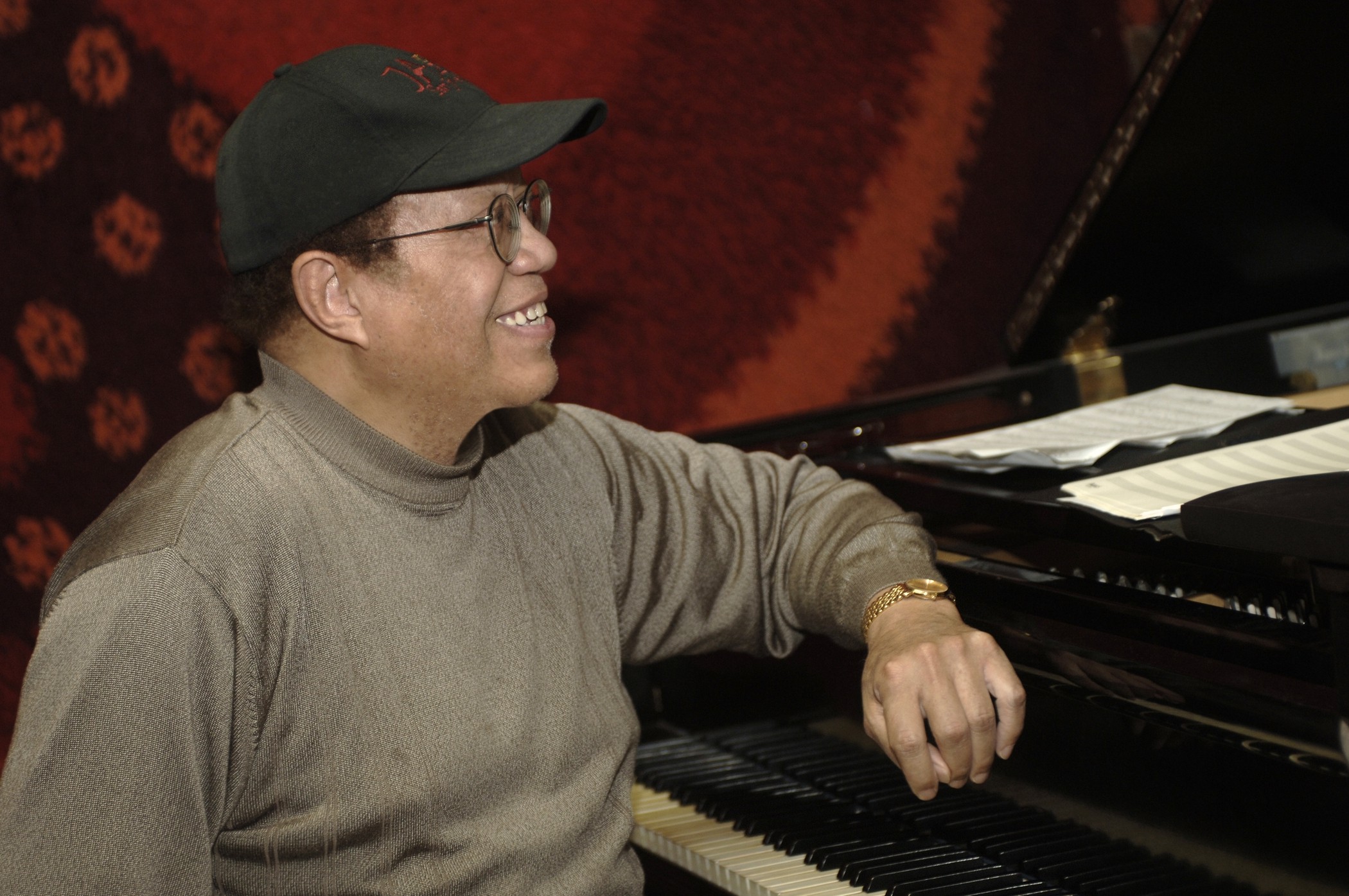
Cedar Walton
January 17, 1934 – August 19, 2013
Cedar Walton is widely celebrated as one of the all-time master jazz pianists and composers. Many of his songs are well established in the repertoire of jazz standards, including Firm Roots, Bolivia, Ugetsu, and Mosaic. His lyrical soloing and sensitive accompanying can be heard on countless classic recordings, in the company of a host of fellow jazz legends throughout his long career. Read more...

